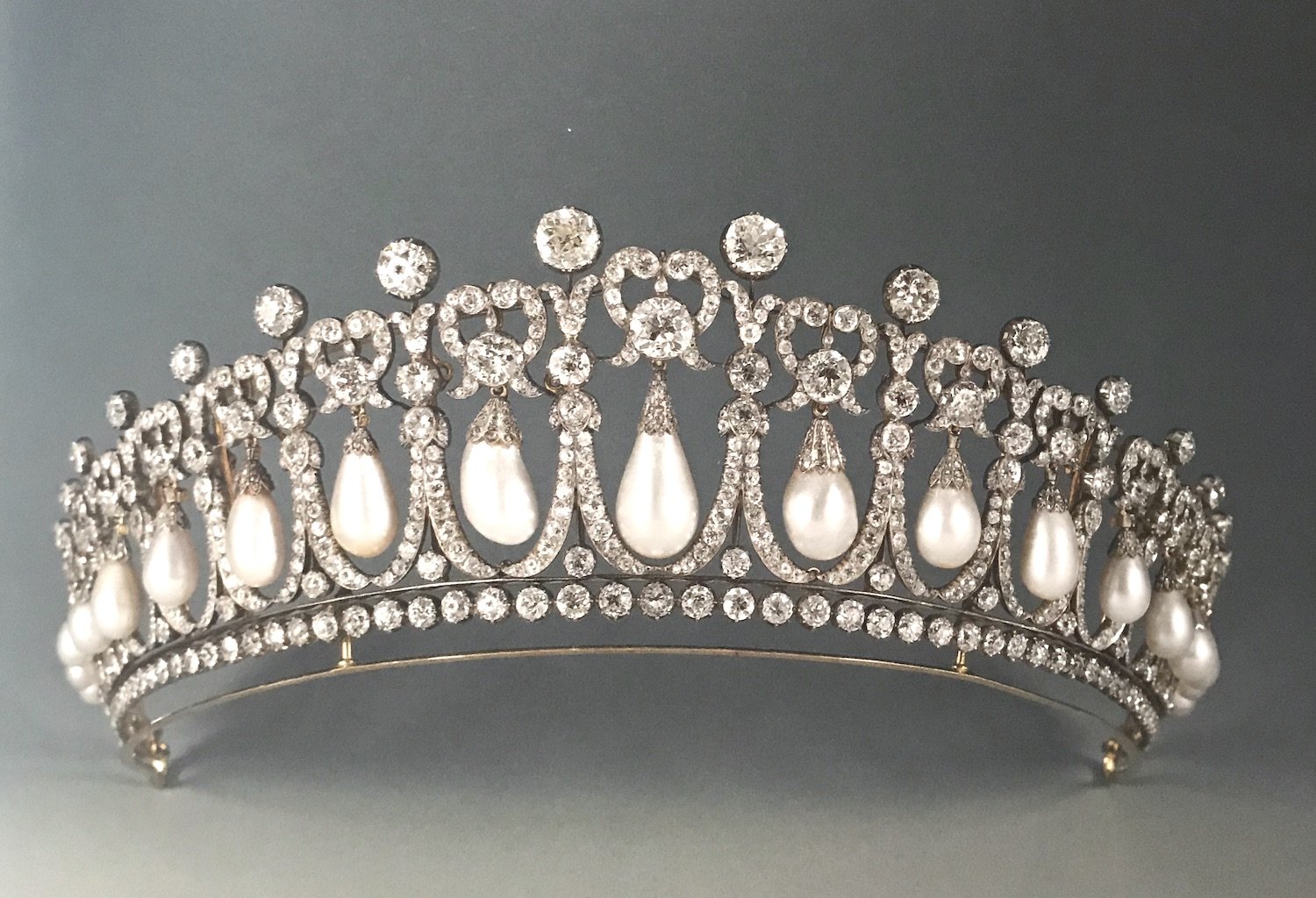AN INSIGHT INTO PRINCESS DIANA'S FAVOURITE TIARA
The pearl and diamond Lover's Knot tiara, made by Queen Mary and passed down to her descendants.
The Lover’s Knot tiara was one of Princess Diana’s favourite pieces of jewellery, probably the piece that most people can recall when they think of her. It was probably presented to her by the Queen on her marriage to the Prince of Wales in 1981 and it is good to see that it has been put to further use by her successor, the Duchess of Cambridge. It is an elegant, balanced, stylish jewel with the sharp increase in the value of natural pearls its value today is probably almost incalculable, containing as it does the set of perfectly matched natural drop shape pearls. Spectacular and rare it may be, but it is not a unique jewel.
The original Lover’s Knot tiara, made in around 1818, was a jewel owned by Augusta, Grand Duchess of Mecklenburg Strelitz, aunt and godmother of Queen Mary (grandmother of the present Queen). It was a piece that Queen Mary knew well and which she much admired. She did not inherit it, however- probably on the grounds that Queen Mary already had a lot of jewels at her disposal and would have access to even more on her accession to the British throne. The tiara was left to the Grand Duchess’ granddaughter.
The original Lover’s Knot tiara, made in around 1818, was a jewel owned by Augusta, Grand Duchess of Mecklenburg Strelitz, aunt and godmother of Queen Mary (grandmother of the present Queen). It was a piece that Queen Mary knew well and which she much admired. She did not inherit it, however- probably on the grounds that Queen Mary already had a lot of jewels at her disposal and would have access to even more on her accession to the British throne. The tiara was left to the Grand Duchess’ granddaughter.
The tiara known to us was ordered by Queen Mary from Garrard and Co., then Crown Jewellers, in about 1913. This was less than three years after hers and her husband’s accession and amongst other things, was busy remodelling several pieces to suit her own taste. She created an exact replica of the Mecklenburg tiara; the original also contains upright pearl drops in addition to the ones suspended in the frame, which Queen Mary also copied. For these, she removed upright pearls from the Girls of Great Britain and Ireland tiara which she had been given for her wedding and set them on her new Lover’s Knot tiara. The drops were then made detachable and permanently removed in 1932. It was in this form in which the Queen inherited the piece on Queen Mary’s death in 1953.
The Queen presented the Lover’s Knot tiara to Princess Diana on her marriage to the Prince of Wales in 1981. It matched her personality perfectly- romantic bows, diamonds to complement her skin tone and pearls representing innocence. As she evolved as a fashion figure, she was able to incorporate the tiara into some of her more daring outfits with panache- it could be argued that the tiara and the Princess made each other iconic. It is now worn by the Duchess of Cambridge.
There were other copies of the Lover’s Knot tiara in other princely European families, notably those of Saxony and Bavaria. These have not been seen decades and are unlikely to have survived. There is a loss that must be mourned, however, and this is of the Youssoupov Lover’s Knot tiara. Contemporary photographs of it show it containing large, perfectly matched natural drop pearls, the shape and size being superior to those in the British version. As this was made for the Youssoupovs, the richest family in Tsarist Russia, we can assume the quality was impeccable, too. From a gemmological point of view it is sad that this fine assemblage of perfect pearls was dismantled. The tiara was last seen on the table of the Bolshevik committee tasked with valuing and selling Tsarist treasure.
The original, however, the 1818 tiara that probably sparked all those copies, is still around and remarkably, intact. It was auctioned by Christie’s in 1981 with the buyers rumoured to be a noble, rich, German family.





